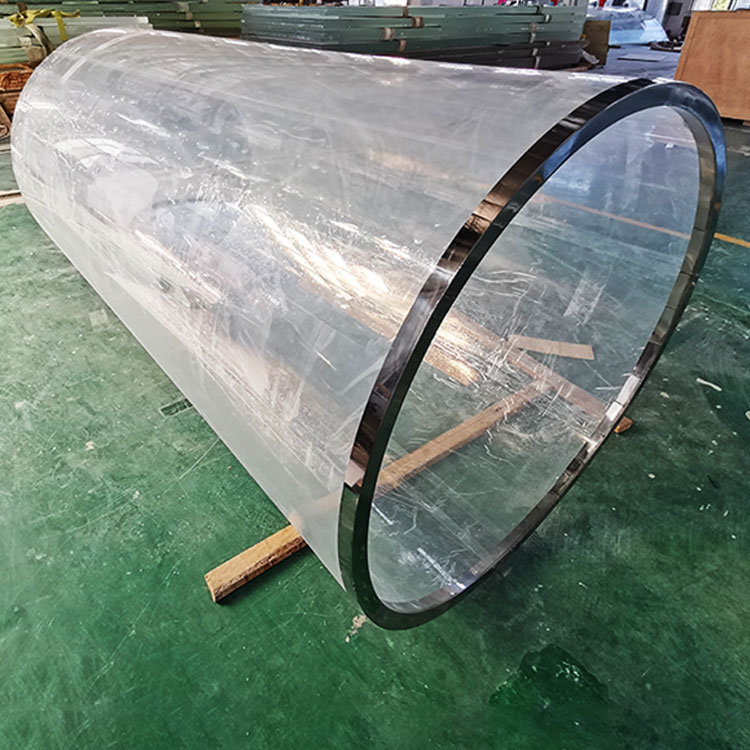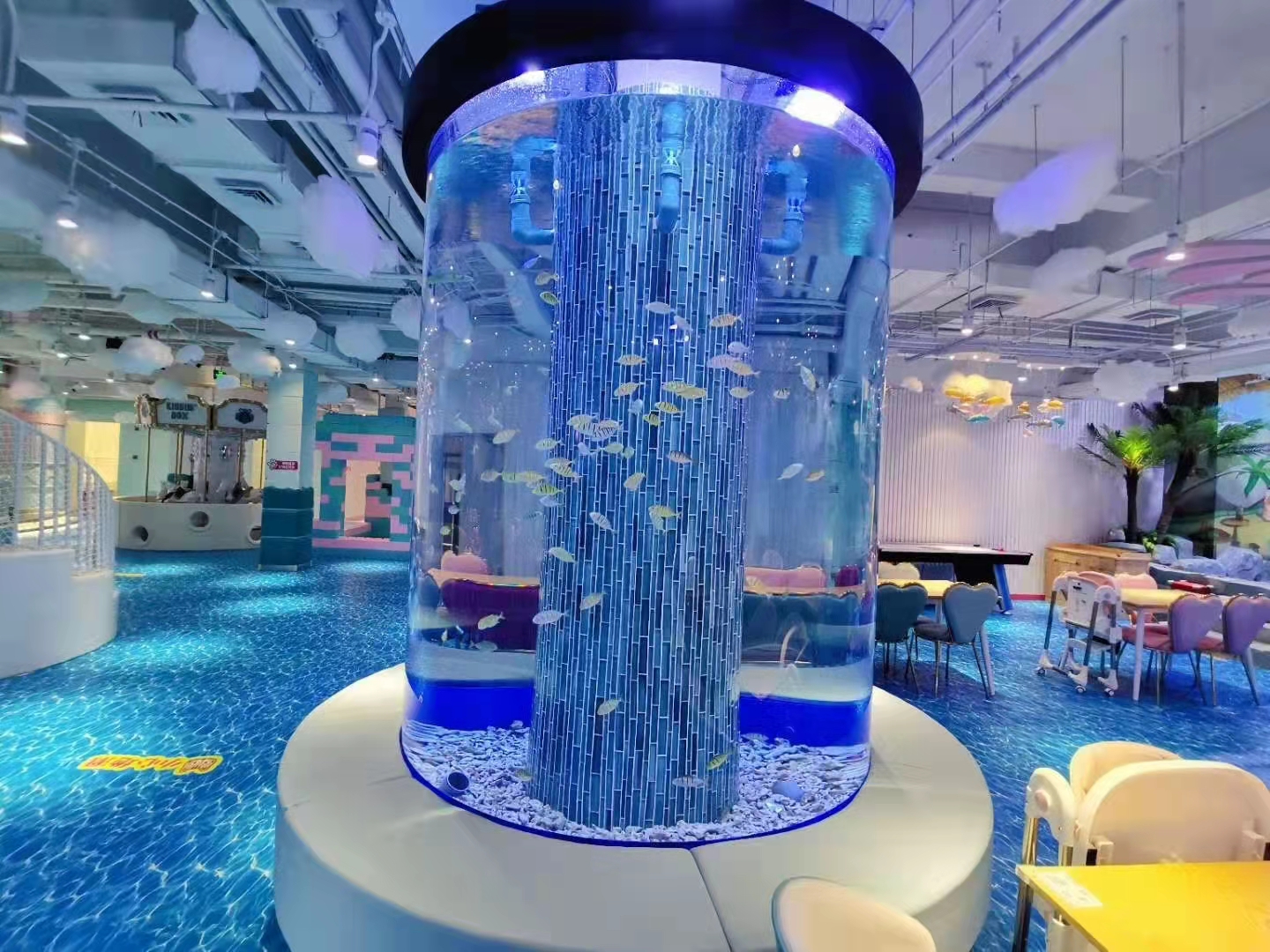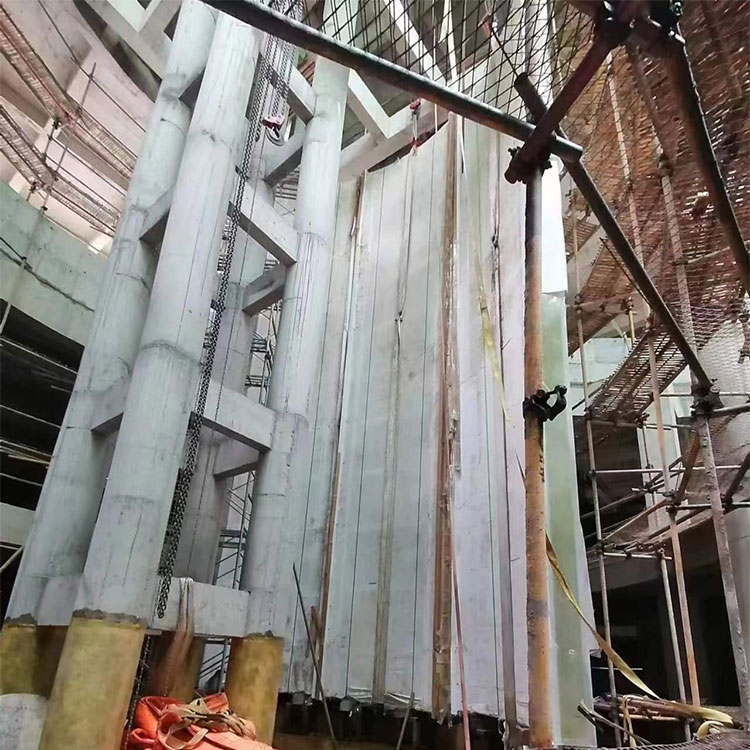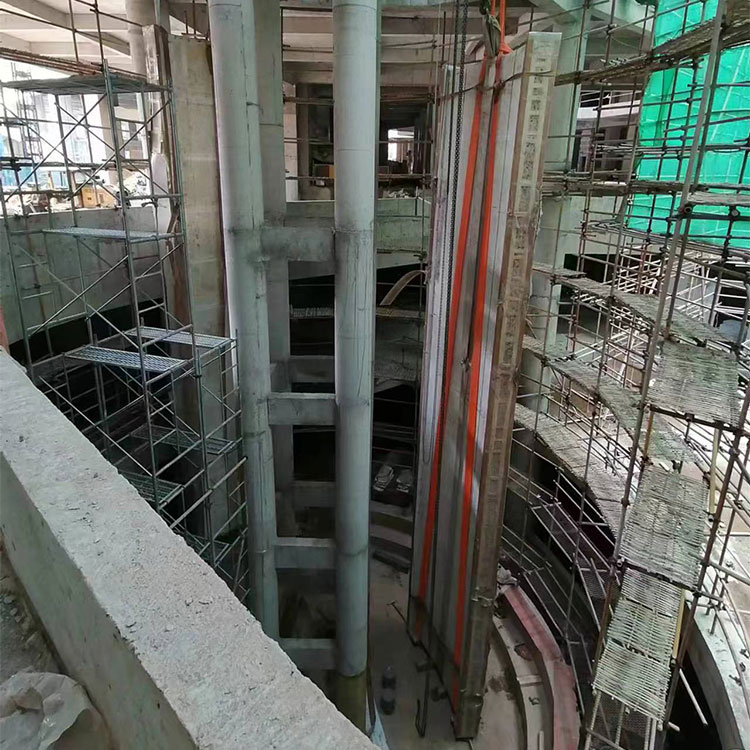Custom Made Acrylic Transparent Cylinder Fish Tanks
Acrylic transparent Cylinder shaped aquariums are a favorite of interior designers and architects around the world for a number of reasons. Firstly they allow a 360 degree view into the aquarium which make them a great feature to position in the middle of a busy space. They are also a cost effective way to provide a tall aquarium which, when well illuminated and filled with brightly coloured coral and livestock, creates a mesmerizing display.
Our on-site custom acrylic aquariums construction expertise is backed by decades of combined experience in building all types of aquariums. From manufacturing to shipping and installation, we’ll handle it all for our clients. Over the years of experience, we have developed numerous unique aquariums using advanced aquarium construction techniques and technologies.Leyu Acrylic has produced various sizes of acrylic transparent cylinder fish tanks

Custom acrylic cylinder - factory

Custom acrylic cylinder - factory

Custom acrylic cylinder - factory
Glass or Acrylic Fish Tanks?
Leyu Acrylic's transparent cylindrical aquarium fish tanks are made from high-definition, scratch-resistant acrylic. Acrylic is often referred to by brand names such as Plexiglas, Acrylic, Lucite, Perclax, and Perspex.
It is much safer to build a cylindrical aquarium fish tank out of acrylic than glass because acrylic has a higher impact resistance, making it a safer choice for public spaces. Acrylic has other benefits as well, including higher transparency and scratches can be easily removed by polishing.
Another benefit of acrylic over glass is that there is much less visual distortion when looking through a curved acrylic sheet than through a curved glass sheet. Fish will appear distorted when looking through a curved glass panel, but this is not a problem when the cylinder is made of acrylic.
Acrylic and glass are two commonly used transparent materials that have some differences in their properties:
Strength:
Glass is more brittle than acrylic, but glass has a higher hardness and stiffness. Acrylic is softer, has better impact resistance, and is less likely to break.
Transparency:
Acrylic is more transparent than glass and has a higher light transmittance, but scratches may appear on the surface after long-term use, affecting transparency.
Durability:
Acrylic is more wear-resistant, corrosion-resistant, and aging-resistant than glass. Glass is more susceptible to chemical corrosion.
Processing performance:
Acrylic is easier to cut, bend, and shape, while glass is more difficult to handle.
Leyu Acrylic has produced various sizes of acrylic transparent cylinder fish tanks.

Large Acrylic transparent Cylinder Aquarium fish tanks Installed in a Shopping Mall
Large acrylic cylinder aquarium fish tanks installed in a shopping mall can be a visually stunning addition to the space, providing a unique and peaceful atmosphere for shoppers to enjoy.
These aquarium fish tanks can range in size from small to large, with some reaching heights of several meters. They are typically made of acrylic or glass and are designed to showcase a diverse range of marine life, including colorful fish, coral, and other aquatic creatures.
The installation of these acrylic aquarium fish tanks requires careful planning and consideration of factors such as the size and weight of the tank, the type of filtration system needed, and the welfare of the animals living within the acrylic fish tank. It is also important to consider the maintenance and upkeep of the aquarium to ensure the health and well-being of the marine life.
Overall, large cylinder aquariums can be a beautiful and captivating addition to a shopping mall, providing a unique and relaxing experience for visitors to enjoy.

Acrylic transparent Cylinder Aquarium fish tank Construction Techniques
There are two main construction methods when building cylinder aquariums out of acrylic. Bonded cylinders are created by joining two curved panels together. This technique is normally used to create large cylinders over 1m in diameter. Bonded cylinders have two lines which are faintly visible where the panels are joined.
Constructing an acrylic transparent cylinder aquarium requires specialized techniques to ensure the structural integrity of the tank and the safety of the aquatic life inside. Here are some common construction techniques used for building cylinder aquariums:
Material Selection:
The primary materials used for constructing cylinder aquariums are glass and acrylic. Acrylic is often preferred for larger tank installations due to its lightweight nature and impact resistance. Glass is used for smaller tanks and is known for its clarity and scratch resistance.
Bonding:
The glass or acrylic panels are bonded together using a strong adhesive specifically designed for aquarium construction. The joints need to be carefully sealed to prevent leaks and ensure water-tightness.
Edge Finishing:
The edges of the tank are polished or beveled to create a smooth finish that is both aesthetically pleasing and safe for handling.
Reinforcement:
For larger cylinder aquariums, additional reinforcement may be required to support the weight of the water and prevent bowing or distortion of the tank walls. This can be achieved by adding bracing or support structures.
Filtration System Installation:
Once the tank structure is complete, a suitable filtration system is installed to maintain water quality and provide a healthy environment for the aquatic life. This may include filters, pumps, heaters, and lighting.

What Kind of Maintenance Do Home Aquariums Require?
There are monthly, weekly, and even daily tasks you can do to keep your aquarium in tip-top shape. Frequently practicing these good habits makes caring for your aquarium significantly easier. Below, we breakdown these best practices in detail.
Daily Checklist
Check your aquarium’s temperature: Monitoring the temperature of your aquarium every day can help you take note of natural, slight fluctuations. Knowing what temperature range to expect can alert you to when those numbers are dangerously high or low. Preemptively checking can prevent a full-blown crisis.
Top off with new water: Replenish your aquarium with new water to replace what’s been lost to evaporation. The amount will vary depending on the size of your aquarium and humidity of your space. By filling with clean water regularly, you’ll avoid having to replace a aquarium full of dirty water all at once.
Inspect equipment to ensure it’s running smoothly: You don’t have to spend a significant amount of time thoroughly examining each piece of equipment. A cursory assessment of heating, lighting, and filtration systems will do the trick. You just want to make sure that everything maintaining the delicate balance of your aquarium’s ecosystem is in working order.
Weekly Checklist
Test the water parameters: Every week, it’s a good idea to check the ammonia, nitrite, and phosphate levels of your aquarium using quality test kits. This task ensures that your aquarium isn’t experiencing a spike in any of these compounds, which can disrupt aquarium life. Once your system has matured—and it you aren’t constantly adding new livestock—you might be able to get away with testing the water less frequently.
Wipe down aquarium panes to get rid of algae: At least once a week, you’ll want to clean your aquarium panes of any build-up. This is best accomplished using an algae magnet that you can easily from the outside of the aquarium. Depending on how quickly waste and algae build up in your aquarium, you might have to perform this task more frequently.
Monthly Checklist
Vacuum gravel of debris: Using an aquarium vacuum, you’ll want to rid your gravel of waste by-products and other debris. Make sure that you use a fine mesh screen on the pump to avoid sucking any substrate. There’s no need to remove your animals from the aquarium during this process—but proceed with caution!
Partially change the water to keep it fresh and clean:
This is perhaps the most vital step in your aquarium maintenance. Every month or so, you’ll want to partially change the water in your aquarium—about 10% of it should be changed at this time. Perform smaller, more frequent water changes so that you don’t have to replace all the water at once. This will not only save you time, but it’s the best way to preserve the equilibrium of your aquarium.
Replace filtration media if necessary:
At least once a month we recommend replacing disposable filtration media, if you’re using a canister filter. In the process, check for build-up or disrepair on the air intake hose and protein skimmer valves. Often, these can become clogged with calcium which can throw the air and water mixture out of balance.
We’ve covered a lot of ground in this guide to home aquariums. Hopefully, you now have a better sense of what you can expect from an aquarium of your very own. While fish aquariums require a lot of work, research, and preparation, the peace and beauty they bring makes it all worth it.

Acrylic cylindrical aquarium - installation

Acrylic cylindrical aquarium - installation

Acrylic cylindrical aquarium - installation
Other related searches
Small acrylic aquarium design
aquarium tank
Acrylic aquarium design ideas
Aquarium specialist
Metal aquarium cabinet
Stainless steel aquarium stand
Small acrylic aquarium design
Acrylic aquarium design ideas
Aquarium
Fish aquarium
Glass aquarium
Cylinder acrylic aquarium
Boyu aquarium
Jebo aquarium
Marine aquarium
Round acrylic aquarium
Large acrylic aquarium
English
العربية
Русский
Español
Português
Français
Deutsch
italiano
한국어
Nederlands
Tiếng Việt
ไทย
Polski
Türkçe
አማርኛ
ភាសាខ្មែរ
Bahasa Melayu
தமிழ்
Filipino
Bahasa Indonesia
magyar
Română
Čeština
Српски
हिन्दी
فارسی
Kiswahili
Slovenčina
Slovenščina
Norsk
Svenska
Ελληνικά
Suomi
עברית
Dansk
Shqip
বাংলা
Hrvatski
Afrikaans
Māori
සිංහල
Беларуская мова
Bosanski
ދިވެހި
Esperanto
guarani
Hausa
ʻŌlelo Hawaiʻi
Kurdî
Lietuvių
Македонски
ਪੰਜਾਬੀ
Runasimi
Türkmençe
isiZulu


 +86-13584439533
+86-13584439533 











































